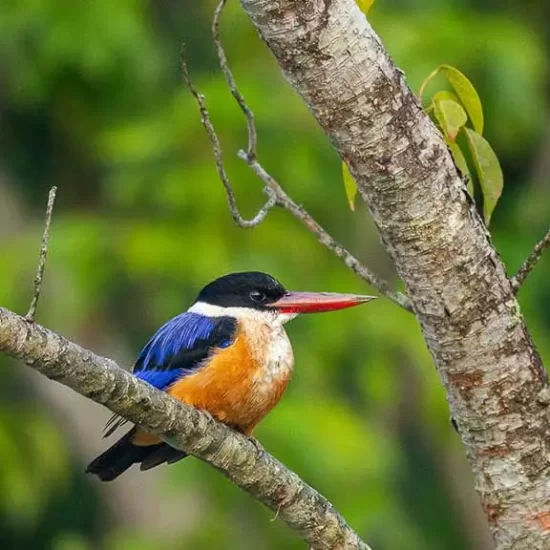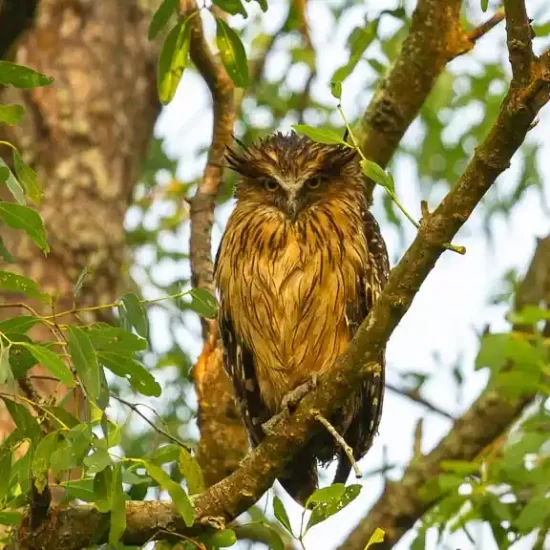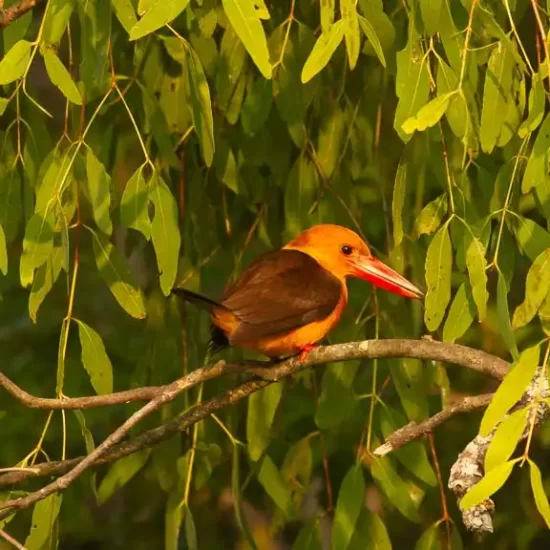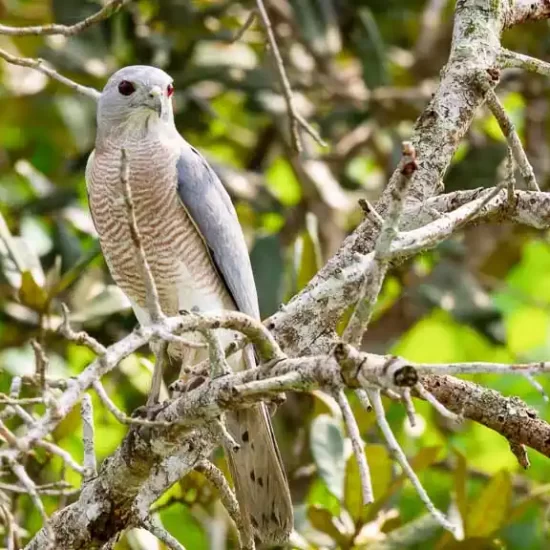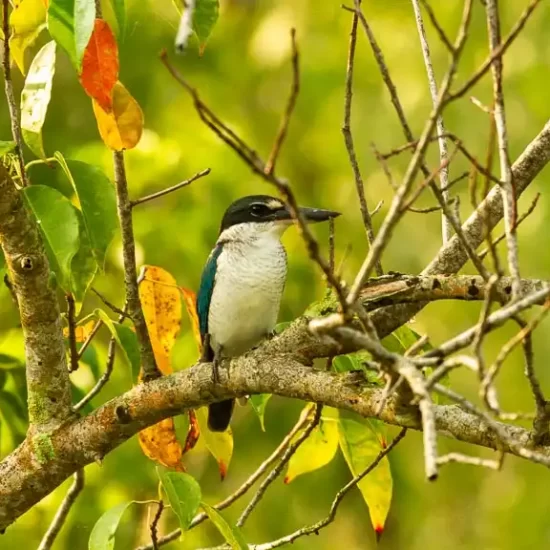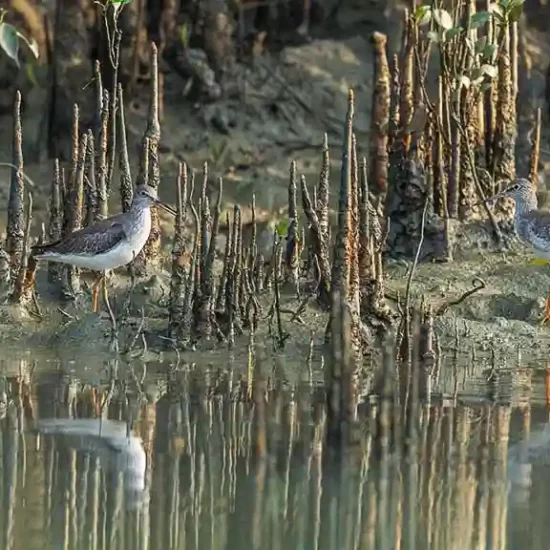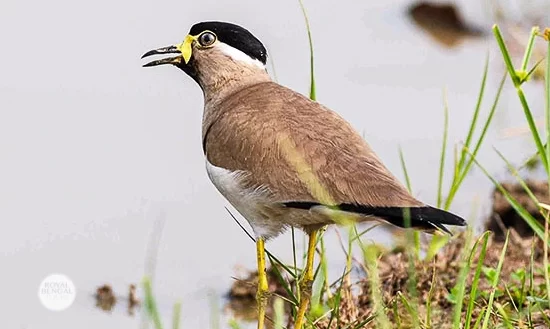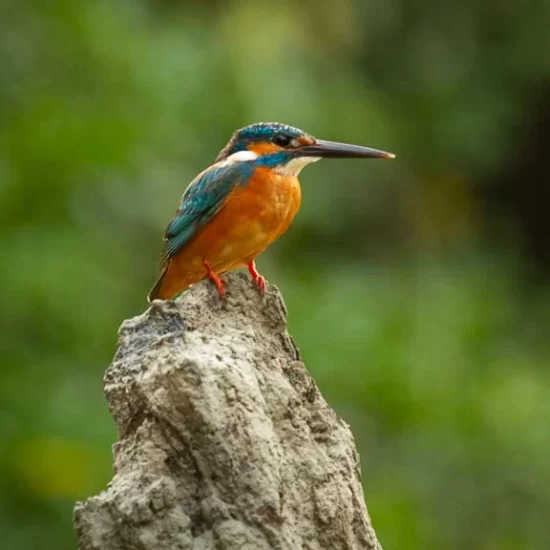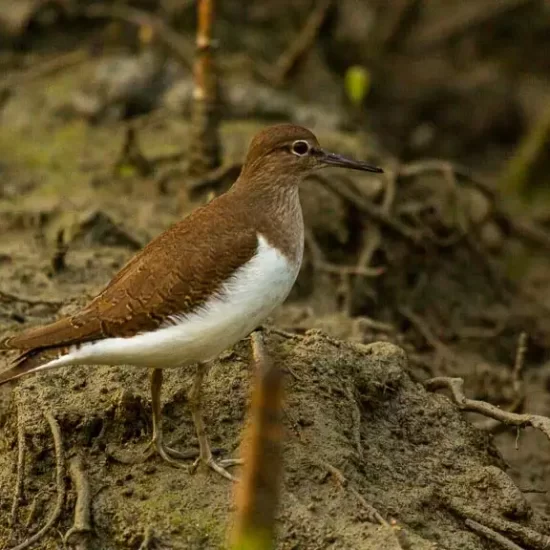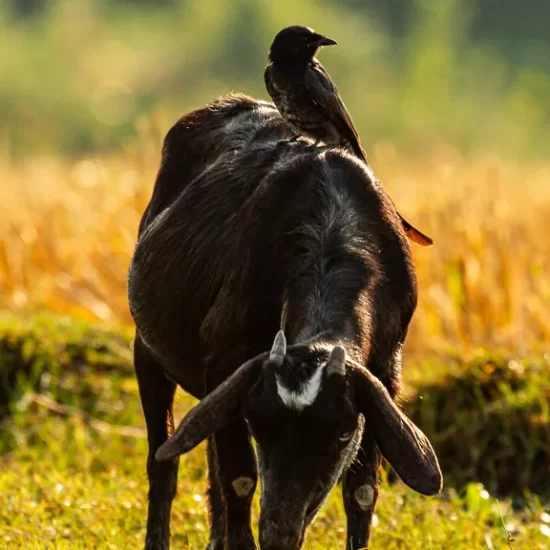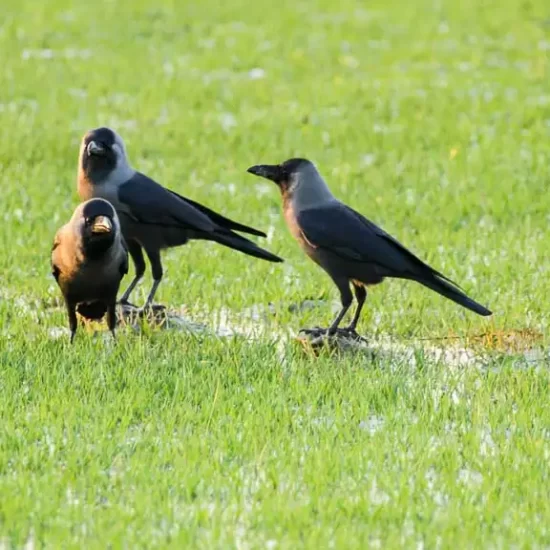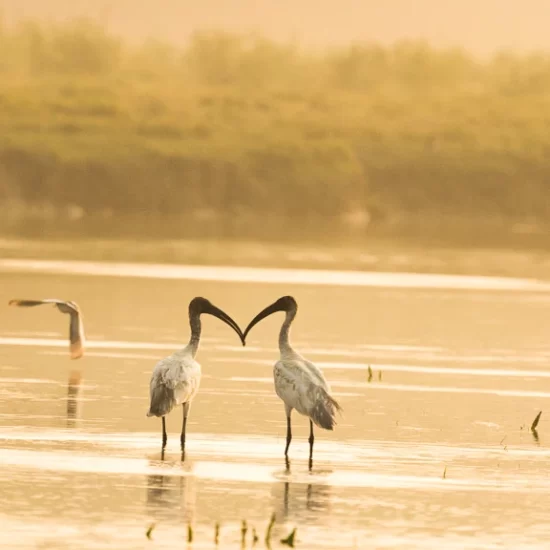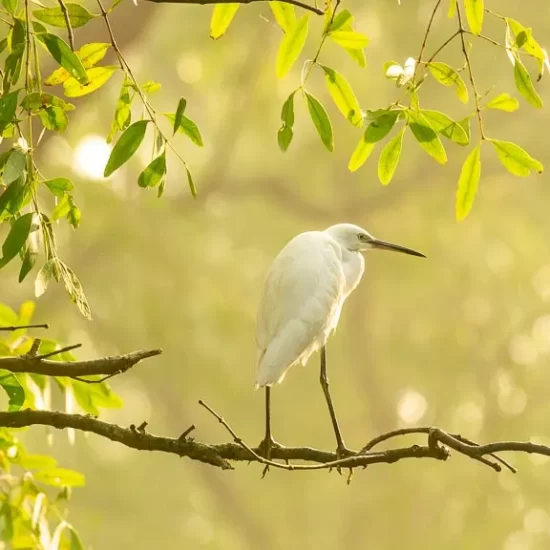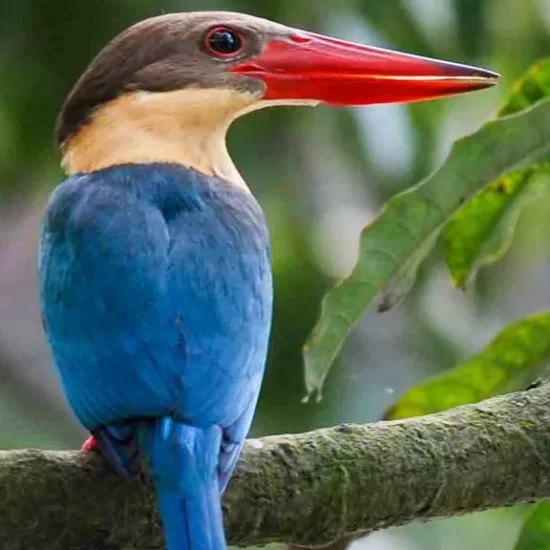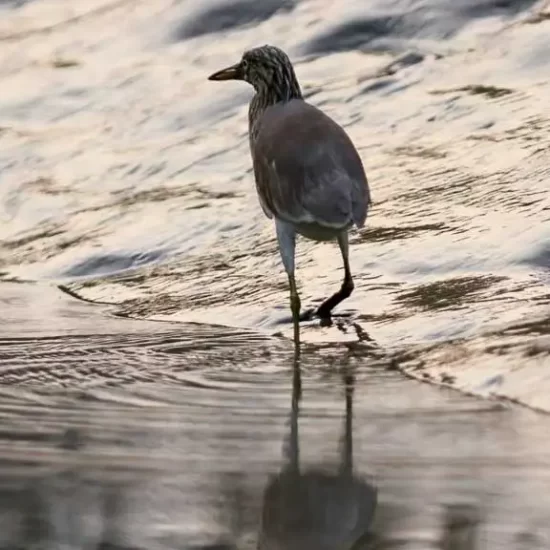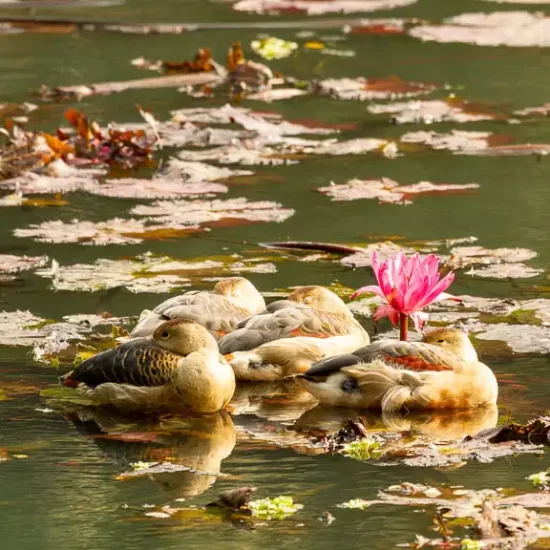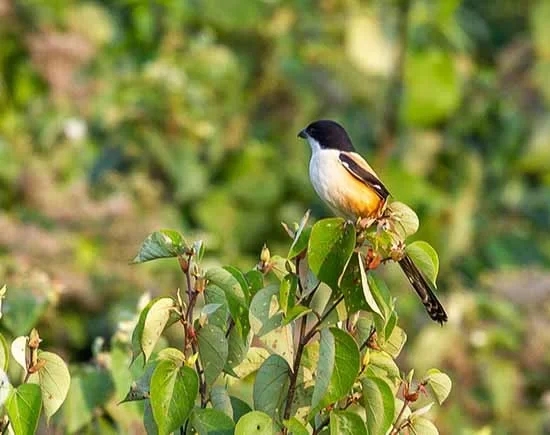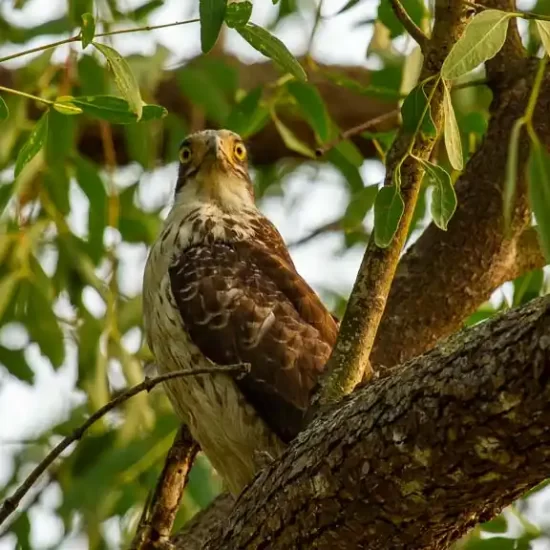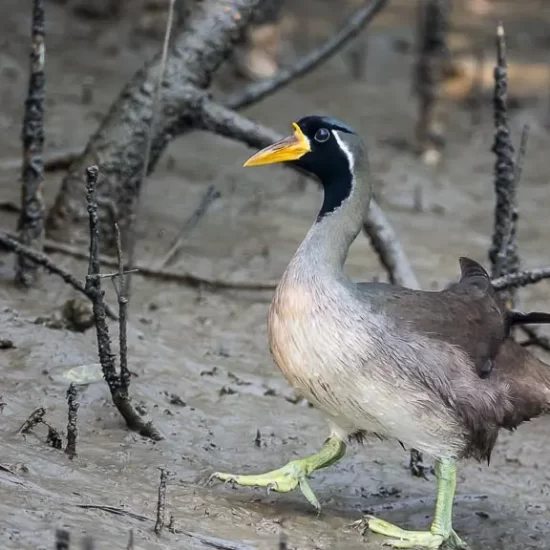Upon arrival at Dhaka International Airport, your guide and driver will meet and greet you and transfer you to your hotel. After check-in and a little freshening up, your guide will give you an orientation of Dhaka according to the available daylight. Dinner and night stay at a 3/4-star hotel in the diplomatic zone.
2
Day 2: Birding around Dhaka
Today we will make a daylong visit to the national botanical garden in Dhaka. If you want, we may drive back to the hotel for rest and lunch during the harsh light and return late in the afternoon while the birds are active again.
Birds of the Botanical Garden:
Lesser Whistling-duck, Rufous Woodpecker, Fulvous-breasted Woodpecker, Black-rumped Flame back, Coppersmith Barbet, Indian Roller, Common Kingfisher, Stork-billed Kingfisher, White-throated Kingfisher, Green Bee-eater, Greater Coucal, Indian Cuckoo, Common Hawk Cuckoo, Rose-ringed Parakeet, Blossom-headed Parakeet, House Swift, Asian Palm Swift, Barn owl, Brown Hawk Owl, Spotted Owlet, Rock Pigeon, Spotted Dove, White-breasted Waterhen, Brahminy Kite, Black Kite, Little Cormorant, Indian Pond Heron, Cattle Egret, Great Egret, Black-crowned Night Heron, Common Kestrel, Brown Shrike, Long-tailed Shrike, Grey-backed shrike, Large-billed Crow, House Crow, Common Iora, Black-hooded Oriole, Spangled Drongo, Black Drongo, Lasser Racket-tailed Drongo, Bronzed Drongo, Ashy Wood swallow, Large Cuckoo shrike, Black-naped Monarch, Oriental Magpie Robin, Grey-headed Canary Flycatcher, Scaly Thrush, Taiga Flycatcher, Jungle Myna, Common Myna, Asian Pied Starling, Chestnut-tailed Starling, Great Tit, Red-vented Bulbul, Common Tailorbird, Jungle Babbler, Purple Sunbird, Purple-rumped Sunbird, Pale-billed Flowerpecker, House Sparrow, Baya Weaver, White Wagtail, Yellow Wagtail, Scaly-breasted Munia.
3
Day 3: Dhaka to Sreemangal by morning train/car (4 Hours) afternoon visit to Hail haor
Your guide will come to pick you up from your hotel and transfer you to the airport train station to avail of your train (ETD 6:30 AM) to Sreemangal. It will be about a 5-hour journey through the beautiful landscape. In the afternoon, we will make a visit to Baikka Beel, which is a protected part of the Hail Haor wetland complex. Here there are two observation towers and a visitor centre under construction. This area hosts a huge number of wintering wildfowl, and the area was noticeably alive with birds. In particular, there were waders and warblers. Night stay in Sreemangal.
4
Day 4: Lawacharra national park Morning and afternoon We will make two visits to the largest rainforest of the country today.
Lawachara National Park is a superb sub-tropical lowland forest. Along with the birds, it is an excellent place to see primates, in particular the endangered Western Hoolock Gibbon, orange-bellied Himalayan squirrels, Indian muntjac, fishing cats, slow loris, masked civets, or other nocturnal animals around. Other species also seen were Northern Pig-tailed Macaques, Phayre's Leaf Monkeys, and Capped Languars. We are in the north-east of Bangladesh and close to the Tripura state of India. This region is full of wildlife hidden in its deep tropical and subtropical forests. Today, we will aim to find birds like Red junglefowl, Oriental pied hornbill, Green billed malkoha, Crested serpent eagle, Shikra, Abbots babler, White-browed Scimitar Babbler, Changeable Hawk Eagle, Yellow-footed green pigeon, Black-backed forktail, Small minivet, Ashy minivet, Scarlet minivet, Oriental scops owl, Grey-headed parakeet, Plum-headed parakeet, Blossom-headed parakeet, Red-breasted parakeet, Vernal hanging parrot, Purple sunbird, Purple ramped sunbird, Purple throated sunbird, Little spider hunter. Overnight stay at the resort.
5
Day 5: Morning visit to Kalachara Forest Mid-day drive to satchari NP
We visit Kalachara Forest in the morning, followed by lunch. A birding trip to Kalachara Forest and local tribal villages. You will be taken around forests, tea gardens, and waterways to focus on birds such as Asian barred owlet, Spotted owlet, Red jungle fowl, Green bee-eater, chestnut-headed bee-eater, Coppersmith barbet, Blue-throated barbet, hair-crested drongo, grass-racket-tailed drongo, Black baza, Oriental honey buzzard, Hill myna, Rose-ringed parakeet, red-breasted parakeet, grey bush chat, Black-crested bulbul.
In the late afternoon, we aim to visit a bathing pool that often hosts Cachar Bulbul, as well as a variety of other bulbuls and flycatchers. Nighttime in the park or at a nearby village with a local family.
6
Day 6: Satchari National Park
We will make two visits to the Satchari National Park in search of the little-known Cachar Bulbul, where outside of Bangaldesh it's been seen by very few birders due to it largely being restricted to the border areas of Myanmar and the South Assam Hills, both largely off-limits to foreigners. In addition, white-cheeked Partridge is possible, and while we will probably hear blue-naped Pitta, it is typically very difficult to see.
7
Day 7: Satchari – Dhaka Sundarban
We return to Dhaka for a domestic flight to Jessore, followed by a drive to the edge of the Sundarbans, where we board our private houseboat, our home for five nights.
Sundarbans Mangrove Forest is the world's largest single-block mangrove forest and home to an incredible faunal and floral diversity, including the world's most likely remaining population of Royal Bengal tigers, the endangered estuarine crocodile, Ganges River dolphins, and an incredible variety of birds. Sundarban is in the lower catchment area of the Ganges-Brahmaputra (Padman-Jamuna) river system, which is the largest sediment basin in the world. This is the largest single block of mangrove forest in the world. The Sundarbans of Bangladesh are Ramsar sites (wetlands of global importance) and were declared a UNESCO World Heritage Site for Natural Heritage Sites of Global Importance.
Four full days inside the Sundarbans, living on our private houseboat as we go in search of Masked Finfoot, inside the flooded forest. The finfoots feed in the quiet, shallow, narrow waterways but can also be found wandering across the muddy edges or even perched up on low, hanging branches. The Sundarbans are the only accessible site that gives a good chance of seeing the species anywhere. Other species could include Indian Spotted Eagle, Mangrove Pitta, Brown-winged Kingfisher, and Buffy Fish Owl, among others. Mammals here include Asian Small-clawed Otter, Ganges River Dolphin, and both Jungle and Fishing Cats, while the area is famous for its healthy Tiger population, though the chances of seeing either cat is very slim! Nights on a houseboat.
9
Day 12: Sundarban to Dhaka
We will leave the hotel for Narail in a reserved vehicle for pied kingfisher and otter fishing and take an afternoon flight towards Dhaka.
No other country will ever give you the excitement of such a unique traditional fishing technique. Bangladesh is the only place where fishermen are still practicing a thousand-year-old tradition of fishing with their trained otters. This is way beyond anything you could ever imagine. Fishermen from the Narail/Gopalgonj area breed and train their otters to increase the catch. Mainly, they work in the rivers north of the forest at night; they also enter the Sundarban forest. Normally, this tour will take place in their home villages; sometimes we follow them from their village to Sundarban.
10
Day 13: day trip to Jahangir Nagar University campus and evening or following morning departure from Bangladesh
Jahangirnagar University campus is wonderful and known as a bird haven, especially during the winter season for migratory birds. 126 species of native birds and 69 species of migratory birds are found on the campus. Migratory birds have been thronging the JU campus for 35 years. There is no poaching of migratory birds at the university. 97%–98% of the birds that come to the JU campus are native migratory birds. The Jahangirnagar University (JU) campus starts buzzing with the chirping of migratory birds at the beginning of winter every year. At the beginning of November, different kinds of birds, including Lesser Whistling Duck (Chhota sarali), Greater Whistling Duck (Boro sarali), Pin-tailed Duck, Common Pochard, Comb Duck, and Cotton Pigmy Goose, flock to the JU campus.


